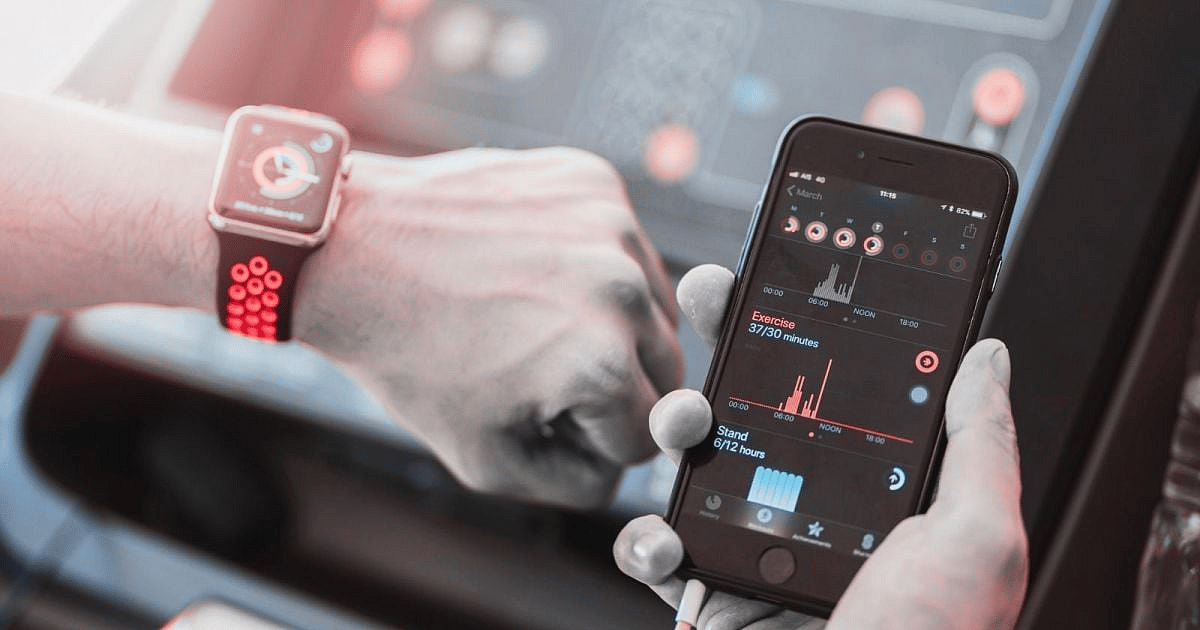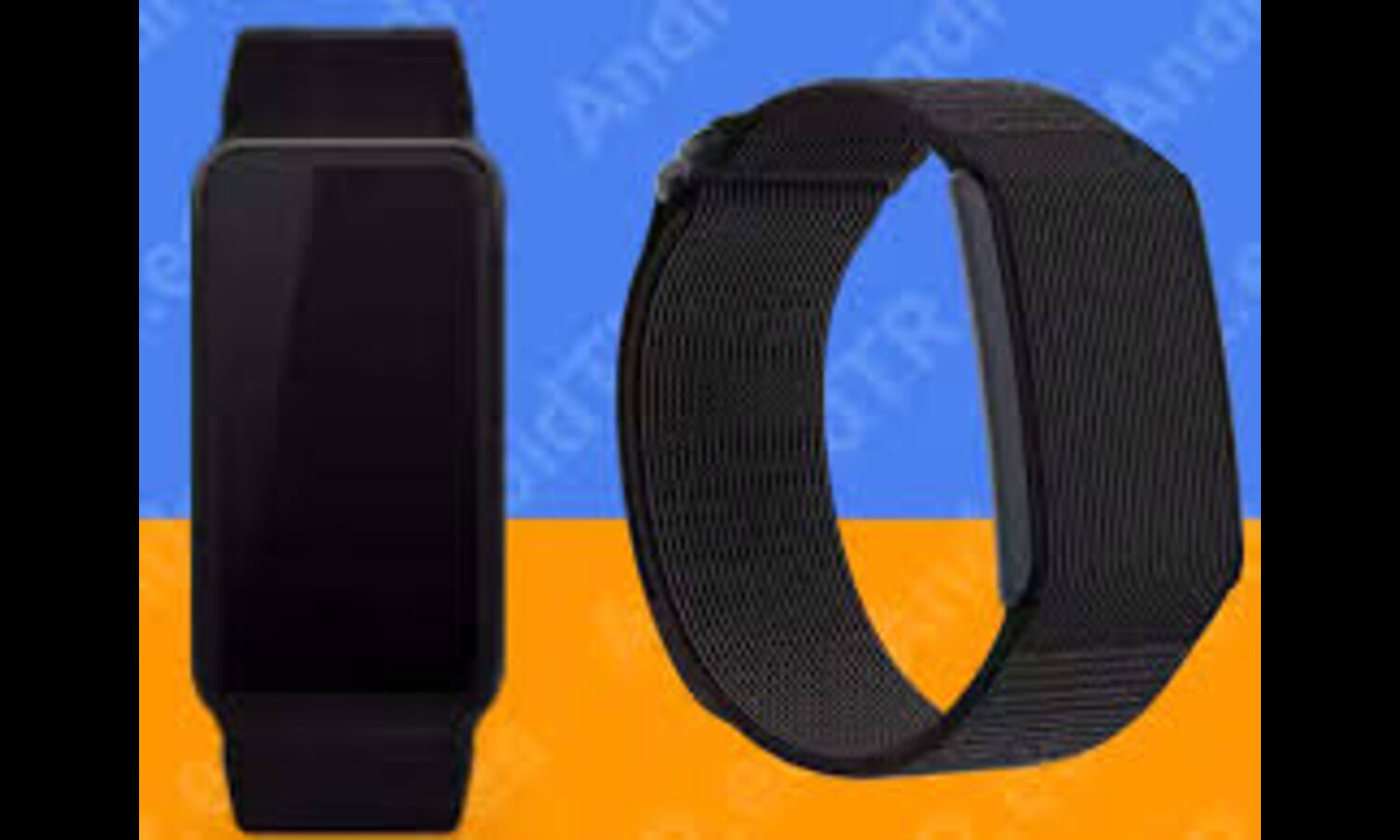Technology
Winnebago County Sheriff’s Department to test new AI tool to reduce report-writing time
Sheriff Gary Caruana speaks at a news conference Wednesday, Oct. 12, 2022, at the Winnebago County Criminal Justice Center in Rockford. (Photo by Kevin Haas/Rock River Current) By Kevin HaasRock River CurrentGet our free e-newsletter ROCKFORD — The Winnebago County Sheriff’s Office will begin using a new artificial intelligence tool designed to reduce the time […]


By Kevin Haas
Rock River Current
Get our free e-newsletter
ROCKFORD — The Winnebago County Sheriff’s Office will begin using a new artificial intelligence tool designed to reduce the time deputies spend writing reports.
The department announced a pilot program utilizing Axon’s Draft One technology. The tool uses AI and body-worn camera audio to create a first draft of the written narrative for a deputy’s report. Deputies and corrections officers utilizing the tool are required to review and verify the accuracy of all reports, the department said.

“It does force you to go through the report to make sure you agree with everything that’s written,” Sgt. Nathan K. Stoneking of the Lafayette, Indiana, police department says in a video produced by Axon highlighting the technology. “There were a few things we had to edit, but I would say it probably wrote 90% of that first report.”

The pilot program will run with a select group of deputies and corrections officers to evaluate the system’s effectiveness and the affect on daily operations, Sheriff Gary Caruana said in a news release. The department will then coordinate with Axon and members of the department to assess the outcomes and determine the future use of the technology within the department.
“Our office is committed to exploring and adopting technologies that allow our deputies to spend less time on paperwork and more time serving our Winnebago County residents,” Caruana said in a news release. “By piloting Axon’s Draft One, we’re continuing to build a modern, responsive, and efficient law enforcement agency that values both innovation and service.”

Axon is a Scottsdale, Arizona-based company that primarily develops tools for the military and law enforcement. It makes equipment such as body-worn cameras and TASER stun guns. The company says officers can spend as much as 40% of their time writing reports, and its technology can produce a draft in seconds.
Caruana said the technology is designed to act as a force multiplier by streamlining report writing while maintaining the department’s standards.

This article is by Kevin Haas. Email him at khaas@rockrivercurrent.com or follow him on X at @KevinMHaas or Instagram @thekevinhaas and Threads @thekevinhaas
Technology
Hydration, Sleep & Stress for Indian Athletes
In sports, even the smallest detail can make a big difference. For Indian athletes trying to compete at the highest level, training harder is important. But training smarter is what sets the best apart. That’s where wearable devices are stepping in. From fitness bands to smartwatches and skin sensors, these tools are quietly changing how […]

In sports, even the smallest detail can make a big difference. For Indian athletes trying to compete at the highest level, training harder is important. But training smarter is what sets the best apart. That’s where wearable devices are stepping in. From fitness bands to smartwatches and skin sensors, these tools are quietly changing how Indian athletes manage their health and performance.
They are now being used to track three very important things like hydration, sleep, and stress. These may sound simple, but they have a big impact on how an athlete performs, recovers, and stays injury-free.
Why Hydration, Sleep, and Stress Matter
Hydration
Water is not just something athletes drink after a workout. It plays a key role in how muscles move, how quickly a person recovers, and how focused the brain stays. In hot Indian weather, especially during outdoor sports like athletics, cricket, and kabaddi, losing too much fluid can cause cramps, fatigue, and even dizziness.
Sleep
Sleep helps the body repair itself. Athletes need quality sleep to recover from heavy training, heal small muscle tears, and feel fresh for the next session. Poor sleep means slower reaction times, poor focus, and higher chances of getting injured.
Stress
Every athlete, from beginners to Olympians, deals with pressure. It could be the stress of competition, fear of failure, or personal issues. If ignored, stress can affect physical health, mood, and overall performance. Learning to monitor and manage stress is just as important as any workout.
How Wearables Are Helping Indian Athletes
Tracking Hydration in Real-Time
New wearable patches can now track how much an athlete sweats and how many salts they lose during training. Some smart bottles and bands even remind athletes when they need to drink water.
For example, wrestlers and hockey players training in the heat use these devices to keep track of their hydration levels. Coaches then adjust their water intake or suggest drinks that restore lost minerals.
Monitoring Sleep Quality
Fitness trackers like Fitbit, Garmin, and even some budget-friendly smartwatches can measure how long and how well an athlete sleeps. They break down sleep into light, deep, and REM cycles. This helps athletes understand whether they are getting enough rest to recover fully.
In Khelo India camps, young athletes are being guided on how to read their sleep data. Based on these readings, coaches help them set sleep routines, reduce screen time before bed, and avoid late-night training if needed.
Measuring Stress Levels
Many wearables now include features that track heart rate variability, which can be a sign of stress. These devices alert the athlete if their body is under more pressure than usual. They may also suggest simple steps like deep breathing, taking a short break, or meditating.
Take the example of a badminton player who sees a spike in stress levels before an important match. Instead of ignoring it, her coach can modify her warm-up and include calming activities to help her stay focused.
Making Sports Science Reach Everyone
Not long ago, only top athletes could afford such smart devices. But thanks to government programs like Khelo India and private sports academies, wearable technology is now reaching more young athletes across the country.
Sports startups are building cheaper devices that work well in Indian conditions. Training centres in cities like Pune, Bengaluru, and Hyderabad are combining traditional sports knowledge with modern technology. This blend of science and skill is helping athletes get better, faster, and healthier.
The Challenges
There are still some hurdles to overcome.
-
Many athletes in rural areas do not have access to smartphones or smart devices.
-
Too much data can be confusing if there is no one to explain it properly.
-
Data privacy is also a concern, especially when multiple apps and platforms are involved.
That is why support from coaches, sports scientists, and the government is important. Athletes should be taught not just how to use wearables, but how to use them wisely.
The Road Ahead
Wearables are not replacing human coaches. They are simply giving athletes better tools to understand their own bodies. They offer real-time information that can prevent injuries, improve focus, and build better habits.
For India, a country with so much young sporting talent, wearable technology can be the silent partner that helps turn potential into performance. As more athletes gain access to these tools, we can expect not just more medals but also healthier, more informed, and well-rounded sportspersons.
The journey has already begun, and with every heartbeat, step, and drop of sweat tracked correctly, the future of Indian sports looks stronger than ever.
Technology
AMBelievable Could Revolutionize the Sport of Tennis – 3DPrint.com
When I first saw AMBelievable’s tennis racket dampener, I’ll be honest, I was skeptical. I was skeptical about its claims, questioned the product’s ability, and wondered what impact this technology could have. Well, two years later, I have completely changed my opinion and fully believe this technology can revolutionize the tennis world. AMBelievable’s Universal tennis racket dampener […]

When I first saw AMBelievable’s tennis racket dampener, I’ll be honest, I was skeptical. I was skeptical about its claims, questioned the product’s ability, and wondered what impact this technology could have.
Well, two years later, I have completely changed my opinion and fully believe this technology can revolutionize the tennis world.

AMBelievable’s Universal tennis racket dampener on a tennis racket.
AMBelievable is a startup from Torino, Italy, and was started in 2022. Its mission was simple: to use metamaterial technology to make tennis more enjoyable. And, after testing its product for three months now, I can attest that I am enjoying tennis more than I ever have.
AMBelievable’s dampener is made using selective laser sintering (SLS), a 3D printing process that fuses powdered TPU into precise shapes. What makes this so interesting is how they’ve used metamaterial-inspired lattice structures to control how the dampener responds to different vibrations. These internal geometries allow it to absorb specific frequencies while staying incredibly lightweight—something that simply couldn’t be done with traditional molding.
The technology is based on these metamaterial architectural structures, as seen below. They are designed to dissipate frequencies based on a player’s preference and give a person a truly customized feel. Additionally, they are not only tuned to a player’s “feel,” but are also designed to eliminate the vibrations associated with tennis elbow.

AMBelievable’s Metamaterial technology targets high, mid, and low frequency vibrations from the tennis racket.
HEAD acoustics, an independent lab, even corroborated AMBelievable’s claims with data from its own lab, and an interactive chart can be found on AMBelievable’s website for you to review the data yourself.

HEAD acoustic’s data from AMBelievable’s website shows the reduction of racket frame vibrations.
This is a large departure from traditional tennis racket dampeners that only target the mid (250-350 Hz) to high frequency (650-750 Hz) range produced by the strings, but leave the low frequencies (80-200 Hz) from the frame, which are linked to tennis elbow, unchecked.
I am excited to see where AMBelievable goes from here. While its CTO, Tomasso Becutti, sees their work staying in the sporting world and possibly venturing into other sports, I think meta materials like these have numerous applications outside that arena as well. Tomasso did mention Phononic-Vibes, another spin-off from the same parent company, which is exploring this technology for acoustic purposes. I think there are plenty of applications there too, like noise-cancelling headphones, soundproofing walls, and quieter car interiors.
I mean, imagine driving down the highway and not hearing the tires rolling down the road?! What bliss.

Simulation of the AMBelievable’s Universal tennis racket dampener.
Overall, I am extremely impressed by AMBelievable, and having the HEAD study quells my biggest criticism from my first article.
If you are interested in trying the dampener yourself, they are available for purchase on the AMBelievable website. I have been using the “Universal” model, but they also offer a “Tuned” model and can customize the dampener in the shape of a logo, too. However, be warned. Because once you try its dampener, you might ditch all your Agassi rubber band dampeners forever and become an AMBelievable like me.
Images courtesy of AMBelievable.
Subscribe to Our Email Newsletter
Stay up-to-date on all the latest news from the 3D printing industry and receive information and offers from third party vendors.
Upload your 3D Models and get them printed quickly and efficiently.


Technology
Mark Walter Is Creating a Sports Empire With $10 Billion Lakers
For just under $10 billion, private equity firm 3G Capital recently bought Skechers — an ascendant global footwear brand with $9 billion in annual sales and 20,000 employees spread across 5,300 stores. For the same sum, you could now buy the Los Angeles Lakers — a basketball team that generates an estimated $500 million a […]

For just under $10 billion, private equity firm 3G Capital recently
For the same sum, you could now buy the Los Angeles Lakers — a basketball team that generates an estimated $500 million a year, employs 1,000 people, and sells little more than TV rights, tickets, and dreams — plus a century of star-studded mystique.
That’s the
Technology
Meta and Oakley Unveil AI Smart Glasses for Athletes and Adventurers
Meta Platforms Inc. (NASDAQ: META) has partnered with Oakley to launch the Oakley Meta HSTN, a high-performance AI smart eyewear product blending advanced technology with athletic design. Targeting athletes and active users, the glasses feature Meta’s voice assistant, built-in camera, open-ear speakers, and IPX4 water resistance, making them ideal for outdoor and fitness-focused lifestyles. With […]

Meta Platforms Inc. (NASDAQ: META) has partnered with Oakley to launch the Oakley Meta HSTN, a high-performance AI smart eyewear product blending advanced technology with athletic design. Targeting athletes and active users, the glasses feature Meta’s voice assistant, built-in camera, open-ear speakers, and IPX4 water resistance, making them ideal for outdoor and fitness-focused lifestyles.
With up to eight hours of continuous use, fast charging, and a high-capacity charging case, the Oakley Meta HSTN is engineered for all-day endurance. Users can capture 3K video and access real-time information hands-free—like surf updates or wind conditions—without reaching for their phone.
This launch builds on Meta’s previous success with the Ray-Ban Meta Smart Glasses, created through its ongoing collaboration with eyewear giant EssilorLuxottica. While the Ray-Ban version catered to lifestyle use, the Oakley Meta HSTN focuses on performance, seamlessly integrating AI with sport.
A global marketing campaign will showcase the product’s capabilities through elite athletes like Kylian Mbappé and Patrick Mahomes, emphasizing how the eyewear merges digital insight with real-world action.
The Oakley Meta HSTN will be available for preorder on July 11 at $499, with a wider launch priced at $399 later this summer. Initial availability includes North America, Europe, and Australia, with planned expansions to India, Mexico, and the UAE—highlighting Meta’s growing push into global wearable tech markets.
By combining wearable AI with sports innovation, Meta continues to advance its position at the intersection of fitness, fashion, and smart technology, where eyewear not only looks sharp but functions as a digital companion.
Technology
Meta activates on new experiences with DAZN, Puma
Puma and Meta have collaborated on a new mixed reality shopping experience that is live in Meta Quest headsets now. The experience is accessible through the Meta Quest web browser WebXR (as opposed to a downloadable app) and will initially focus on Puma’s recently released All-Pro Nitro shoe. Within the browser, users can purchase the […]

Puma and Meta have collaborated on a new mixed reality shopping experience that is live in Meta Quest headsets now.
The experience is accessible through the Meta Quest web browser WebXR (as opposed to a downloadable app) and will initially focus on Puma’s recently released All-Pro Nitro shoe. Within the browser, users can purchase the sneaker as well as size their feet by placing their hand controllers at the tips of their toe and heel.
Ivan Dashkov, Puma’s Head/Emerging Marketing Tech, told SBJ that Puma and Meta believe this activation is the first shopping experience in WebXR.
“It’s a little bit of a demo,” he said. “[Meta] can showcase to other brands what they can do in these experiences.”
Meta’s Director of Engineering Mike Halloran called the project a “proof of concept for the broader retail industry,” in a note to SBJ.
“The ability to virtually size products, examine them in your own space, and customize them in real-time addresses some of the biggest pain points in online shopping,” he said. “We’ve been pleased with initial customer feedback from this new experience, and we’ll continue to innovate to make this a great mixed reality experience.”
Indeed, the foot sizing feature is the experience’s most innovative capability. Dashkov said it was born out of Puma’s e-commerce team reporting that customers often purchase multiple pairs of shoes, then return sizes that don’t fit.
“That’s been a little bit of a pain point for us,” Dashkov said. “We’re hoping this is accurate enough to reduce people’s need to buy multiple pairs of different size.”
Puma has invested in immersive methods of customer engagement in the past. In 2022, it launched a desktop-accessible metaverse retail platform called Blackstation, then expanded that in 2023, allowing users to explore virtual worlds and redeem digital collectibles for Puma sneakers. Puma also recently partnered with Manchester City and generative artificial intelligence provider DeepObjects on an AI jersey creation tool and fan contest.
In terms of its relationship with Meta, Puma was the first sportswear brand to integrate into Meta’s avatar store and last year staged a mixed-reality activation using Meta Quest headsets at store locations in Germany, during which users sampled various fitness experiences in a 2×2 meter space.
Dashkov said early returns on the WebXR shopping experience, which formally launched last week, have exceeded expectations in both number of visitors and time spent by those visitors. Projects like these are not yet viewed internally as a significant sales driver, he added, but more of a “test and learn” initiative that will make the business agile as headsets and smart glasses proliferate further. Meta already sells AI-enabled Ray-Bans, and Google is expected to release Android XR glasses that include Gemini AI features next year.
“A lot of people are predicting that [smart glasses] will eventually replace the smartphone in general, and people will have these kinds of glasses to interact with the world and interact with different brands and different websites,” he said. “For us, it’s future-proofing the company and getting ready for that future.”
Technology
Fitness Band from Amazfit May Launch Soon, Leaks Claim
The Amazfit Helio Strap, a new fitness-focused wearable, appears poised for launch after a series of online leaks and sightings in the official app. Social media posts and app-based discoveries have stirred buzz around the yet-to-be-released device. A recent Instagram interaction involving a HYROX athlete hinted at a June 24 release date. This aligns with […]

The Amazfit Helio Strap, a new fitness-focused wearable, appears poised for launch after a series of online leaks and sightings in the official app.
Social media posts and app-based discoveries have stirred buzz around the yet-to-be-released device. A recent Instagram interaction involving a HYROX athlete hinted at a June 24 release date. This aligns with earlier unofficial comments by an Amazfit team member on Reddit, suggesting a release was imminent.
The Helio Strap was previously listed—albeit prematurely—by a U.S. retailer, with a retail price of $79.99. Though no official pricing has surfaced for international markets, the U.S. figure provides early context.
The device is expected to support key wellness features, including monitoring for heart rate, sleep, and stress indicators. It may debut a new health metric feature, BioCharge, intended to gauge overall energy readiness. The wearable will reportedly sync with other Amazfit products and consolidate data in the Zepp app.
Physically, the Helio Strap is designed with a minimalist look, featuring a black band and a lightweight build of approximately 18 grams. Battery life is projected to last up to 10 days on a single charge.
Although Amazfit has not confirmed the official launch date or regions, the growing number of references suggests a formal announcement is imminent.
-

 High School Sports2 weeks ago
High School Sports2 weeks agoParents Speak Out As Trans Pitcher Throws Shutout In MN State Quarterfinals
-

 Professional Sports2 weeks ago
Professional Sports2 weeks ago'I asked Anderson privately'… UFC legend retells secret sparring session between Jon Jones …
-

 Health2 weeks ago
Health2 weeks agoOregon track star wages legal battle against trans athlete policy after medal ceremony protest
-

 Professional Sports2 weeks ago
Professional Sports2 weeks agoUFC 316 star storms out of Media Day when asked about bitter feud with Rampage Jackson
-

 NIL3 weeks ago
NIL3 weeks agoNCAA Sends Clear Message About Athlete Pay and Roster Limits
-

 NIL3 weeks ago
NIL3 weeks agoMen's college basketball Top 25 reset
-

 Social Media3 weeks ago
Social Media3 weeks agoControversial Athletics Gender Dispute Goes Viral After Riley Gaines Lashes Over Authorities
-

 Motorsports1 week ago
Motorsports1 week agoNASCAR Weekend Preview: Autódromo Hermanos Rodríguez
-

 College Sports2 weeks ago
College Sports2 weeks agoOKC’s Mark Daigneault knows what it takes to win championships. His wife has won a ton of them
-

 Rec Sports3 weeks ago
Rec Sports3 weeks ago2x NBA All-Star Reacts to Viral LeBron James Statement
































